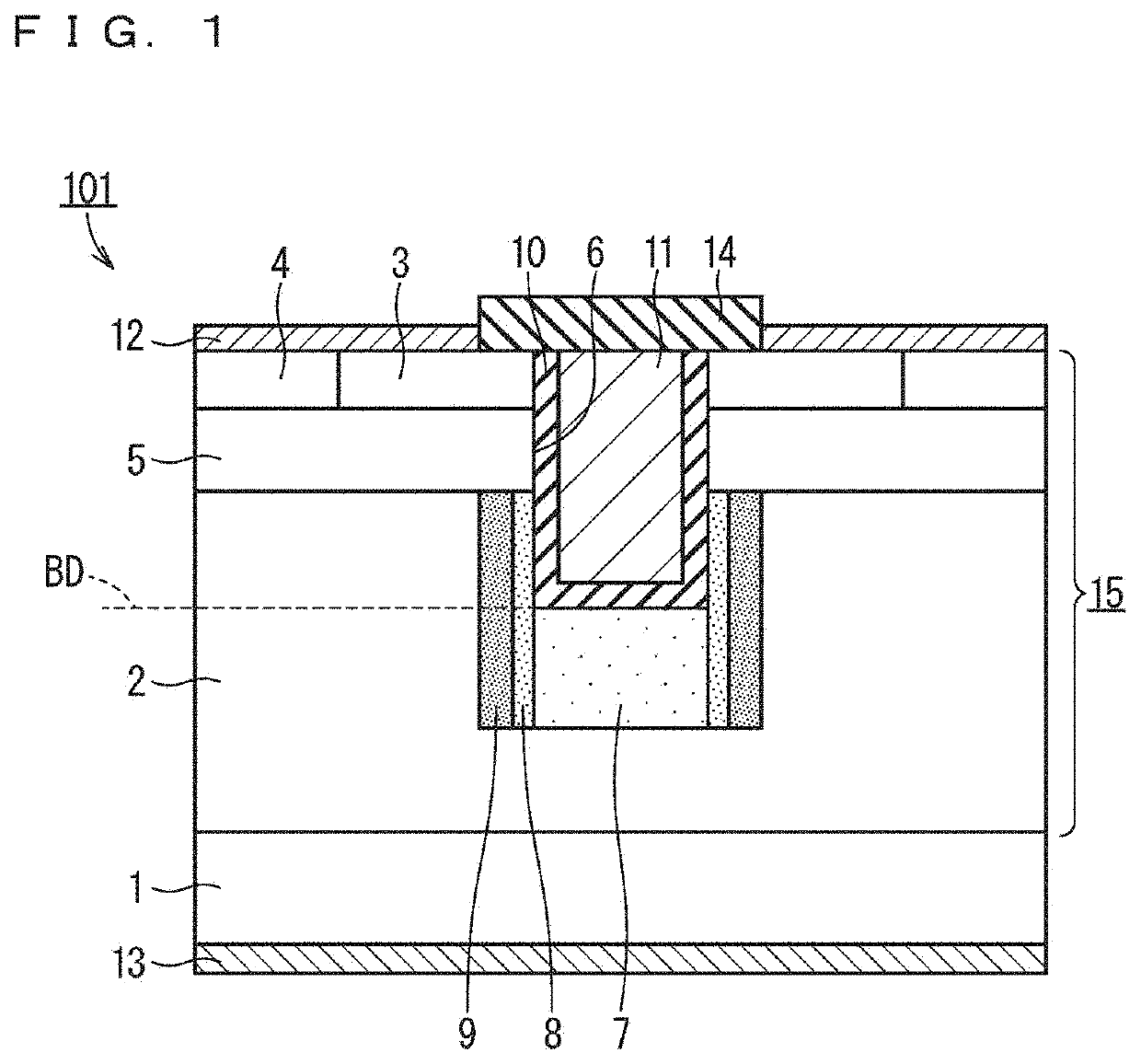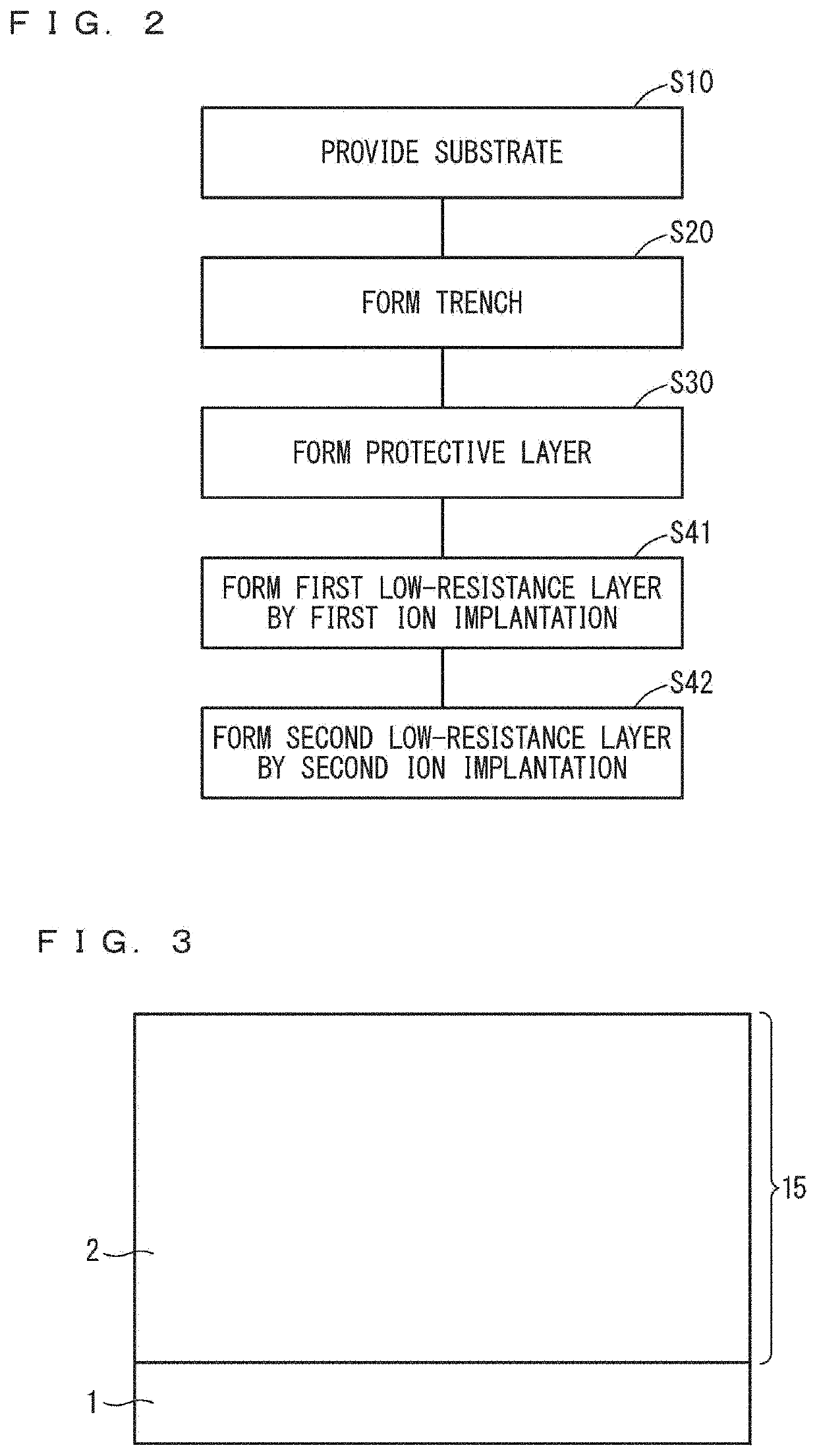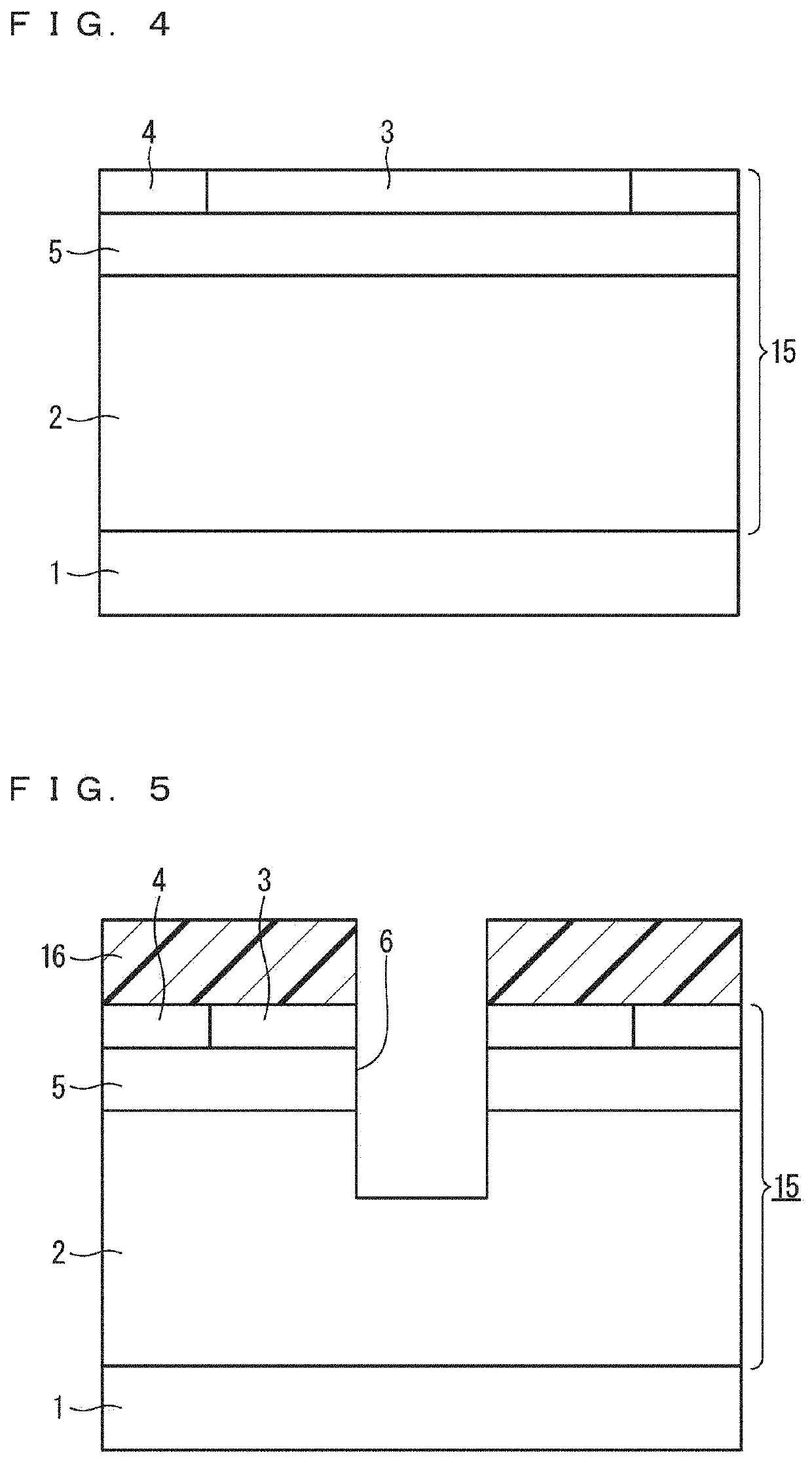Silicon carbide semiconductor device and manufacturing method of same
a technology of silicon carbide and semiconductors, applied in the direction of semiconductor devices, basic electric elements, electrical equipment, etc., can solve the problems of gate insulating film breakdown, electric field concentration at the bottom of the trench, and the effect of reducing on resistance, excessive electric field concentration, and prolonging the depletion layer
- Summary
- Abstract
- Description
- Claims
- Application Information
AI Technical Summary
Benefits of technology
Problems solved by technology
Method used
Image
Examples
first embodiment
[0041](Overview of Configuration)
[0042]FIG. 1 is a partial cross-sectional view schematically illustrating a structure of a cell of a MOSFET 101 (silicon carbide semiconductor device) according to a first embodiment. The MOSFET 101 (silicon carbide semiconductor device) has a semiconductor layer 15, a gate insulating film 10, and a gate electrode 11, and the MOSFET 101 may further have a substrate 1 (semiconductor substrate), a source electrode 12, a drain electrode 13, and an interlayer insulating film 14. The semiconductor layer 15 has a drift layer 2, a body region 5, a source region 3, at least one protective layer 7, at least one first low-resistance layer 8, and at least one second low-resistance layer 9. The semiconductor layer 15 may further have a body contact region 4.
[0043]The drift layer 2 is made of silicon carbide. The drift layer 2 has a first conductivity type. The first conductivity type is either an n-type or a p-type, and is preferably an n-type. The body region 5...
second embodiment
Modification of Second Embodiment
[0113]The first low-resistance layer 8 and the second low-resistance layer 9 may be formed by vertical ion implantation into the surface of the semiconductor layer 15 or by epitaxial growth. For example, after the drift layer 2 is formed according to the manufacturing method of the first embodiment, as illustrated in FIG. 3, the second low-resistance layer 9 is formed by ion implantation or epitaxial growth. The first low-resistance layer 8 is formed thereon by ion implantation or epitaxial growth. In this ion implantation or epitaxial growth, the first low-resistance layer 8 and the second low-resistance layer 9 may be formed locally by using a mask partially having an opening. Thereafter, the body region 5, the source region 3, and the body contact region 4 are formed by the same method as in the first embodiment. Then, the trench 6 is formed to contact the side surface of the first low-resistance layer 8, and the protective layer 7 is formed to co...
third embodiment
[0117](Configuration)
[0118]FIG. 22 is a partial cross-sectional view schematically illustrating a structure of a cell of a MOSFET 103 (silicon carbide semiconductor device) according to a third embodiment. The differences between the MOSFET 103 and the MOSFET 101 (FIG. 1: first embodiment) are: the configurations of a first low-resistance layer 8 and a second low-resistance layer 9 and methods of forming them; and the fact that a third low-resistance layer 17 is formed, and hence the differences will be mainly described below.
[0119]Also in the MOSFET 103, the first low-resistance layer 8 covers the side surface of the trench 6 below the body region 5, similarly to the MOSFET 101. The second low-resistance layer 9 is formed to contact the side surface of the first low-resistance layer 8.
[0120]In the MOSFET 103, the third low-resistance layer 17 is further provided as part of the semiconductor layer 15 in addition to the first low-resistance layer 8 and the second low-resistance layer...
PUM
 Login to View More
Login to View More Abstract
Description
Claims
Application Information
 Login to View More
Login to View More - R&D
- Intellectual Property
- Life Sciences
- Materials
- Tech Scout
- Unparalleled Data Quality
- Higher Quality Content
- 60% Fewer Hallucinations
Browse by: Latest US Patents, China's latest patents, Technical Efficacy Thesaurus, Application Domain, Technology Topic, Popular Technical Reports.
© 2025 PatSnap. All rights reserved.Legal|Privacy policy|Modern Slavery Act Transparency Statement|Sitemap|About US| Contact US: help@patsnap.com



